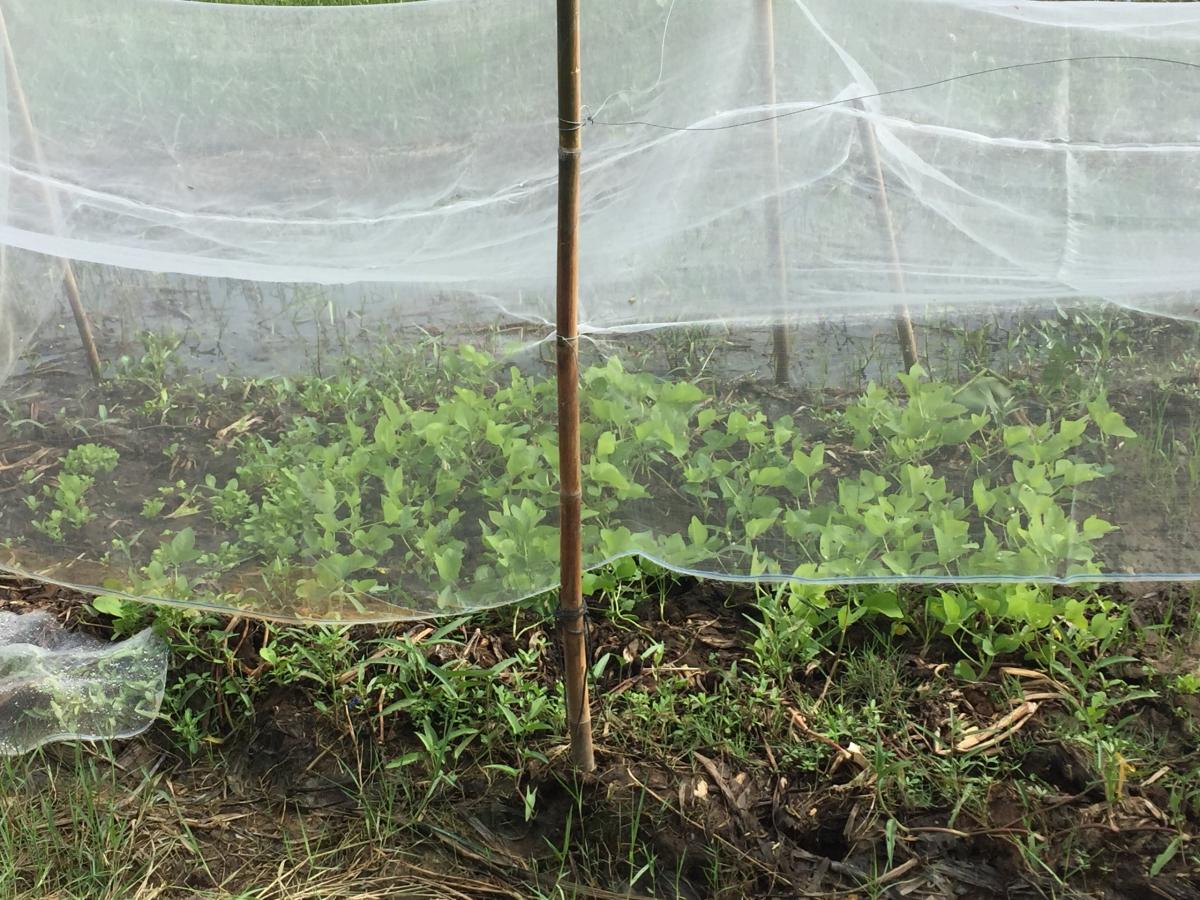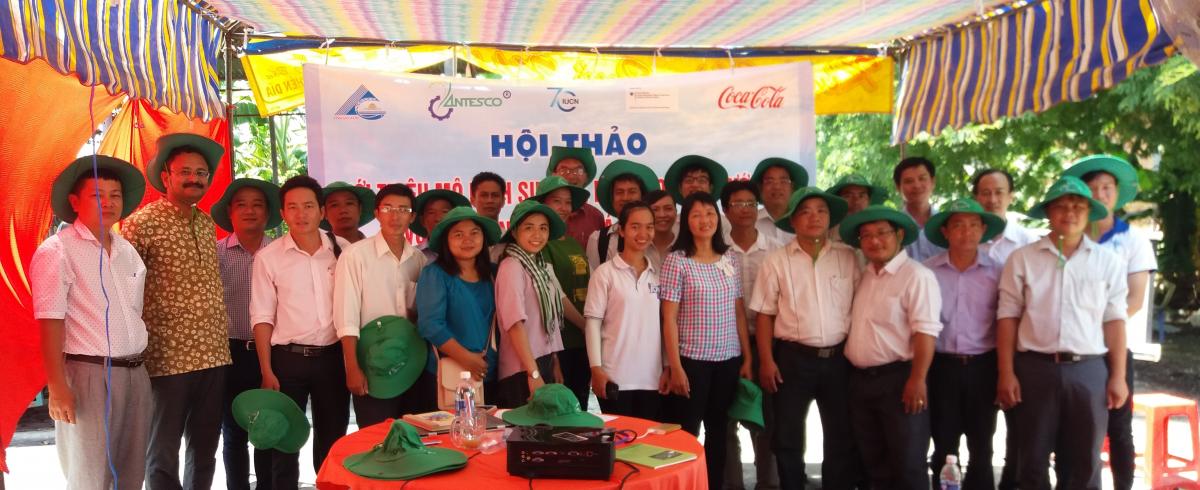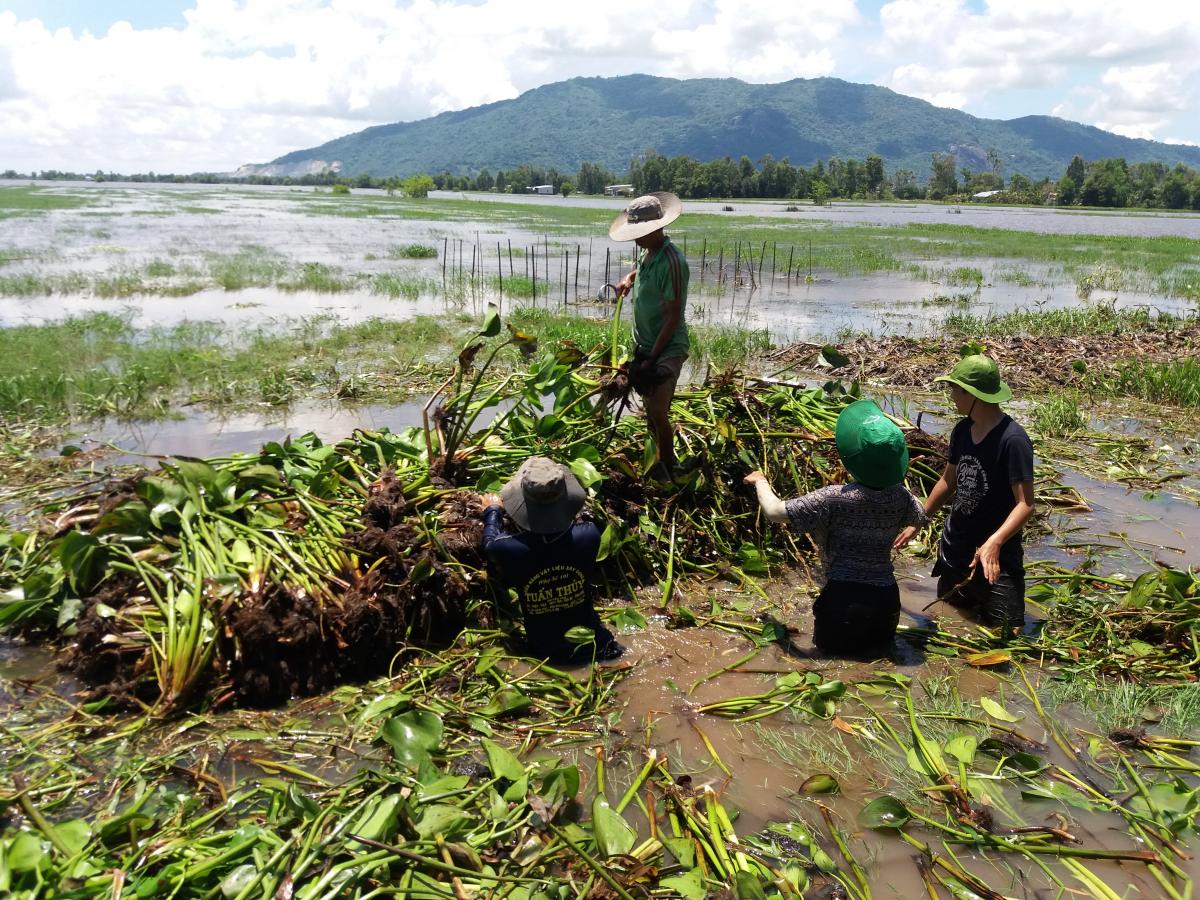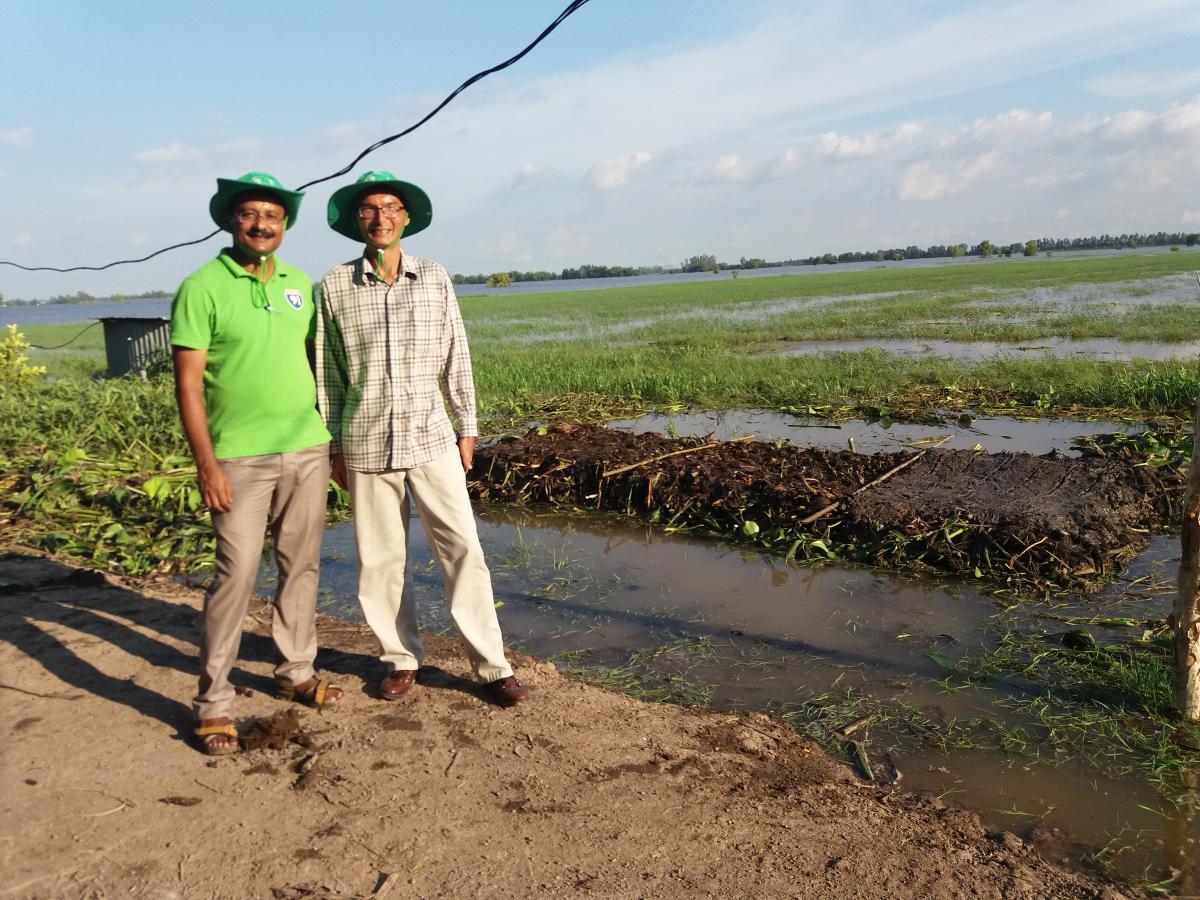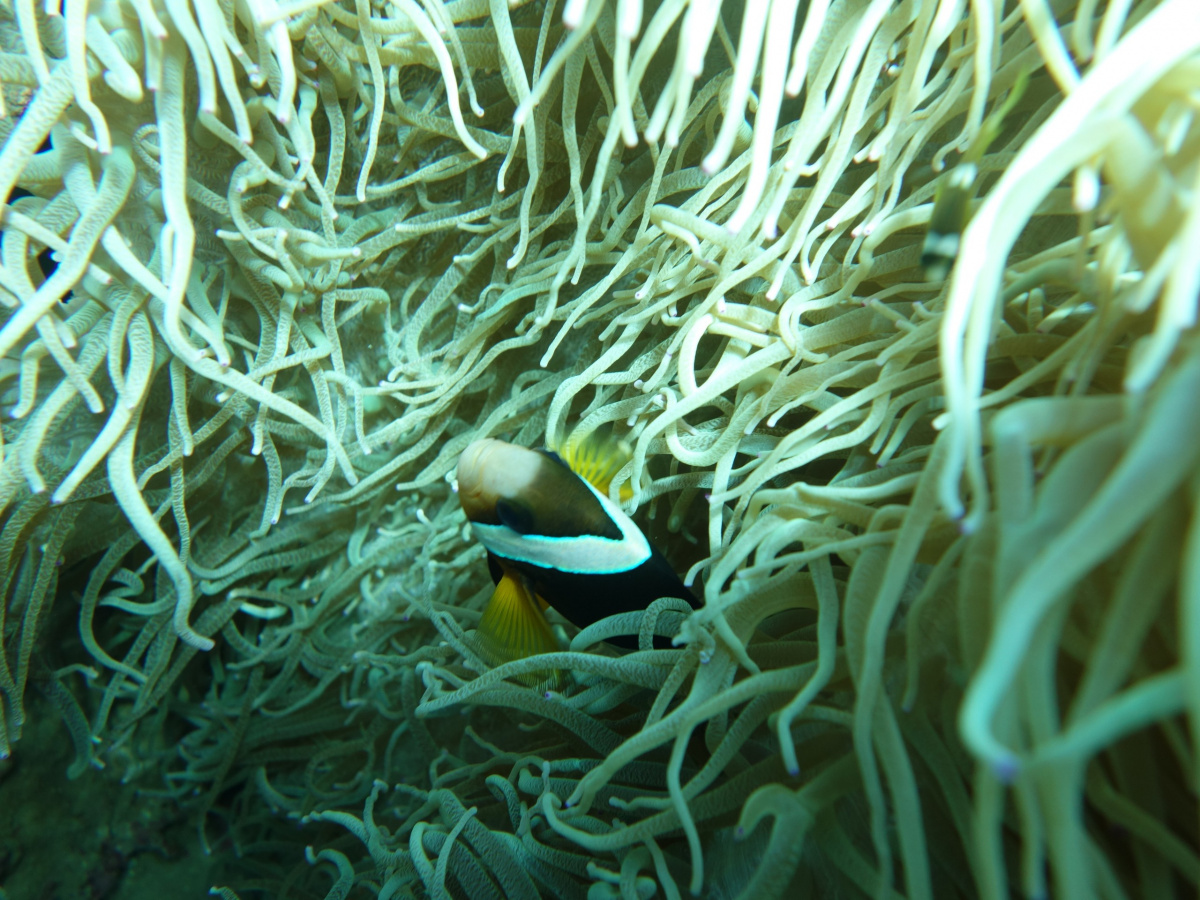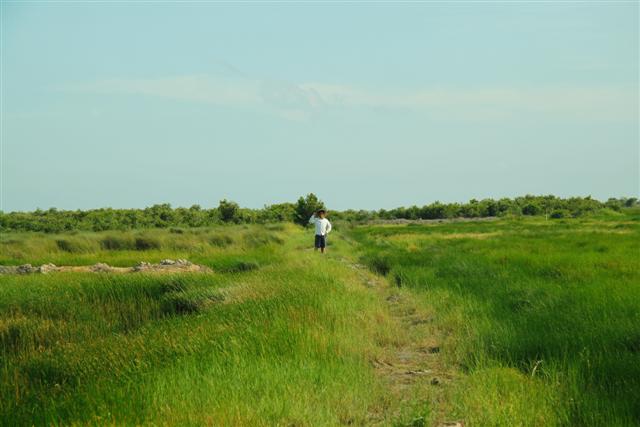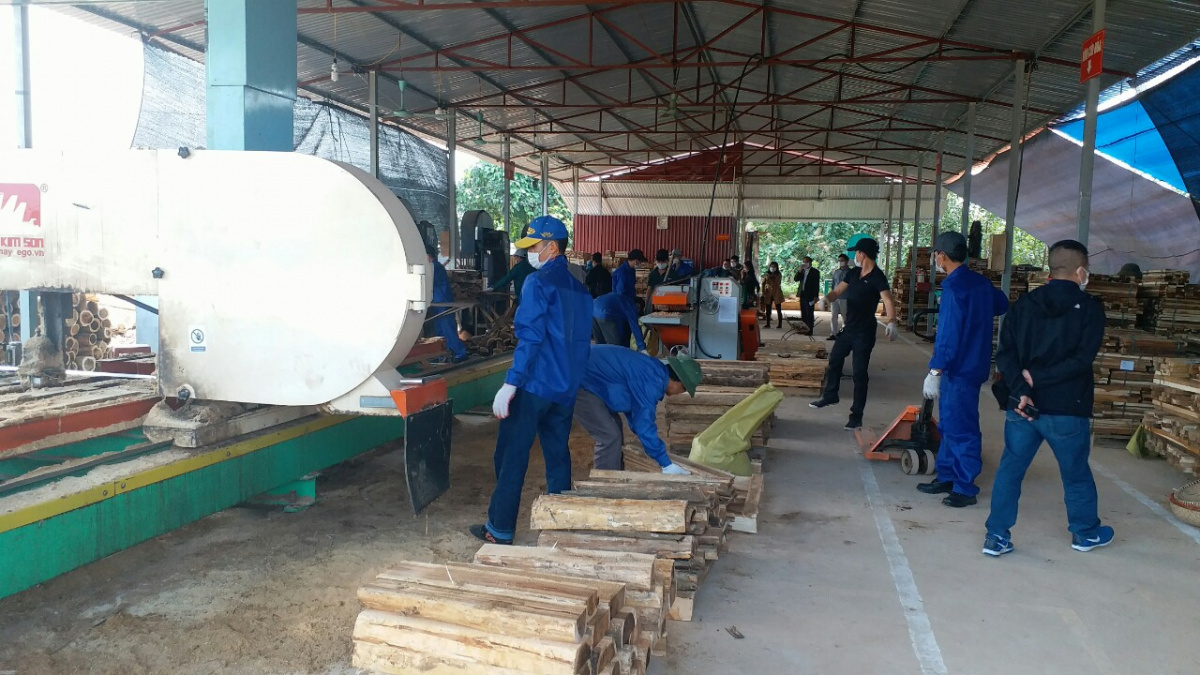Blog: Floating agriculture drifts from Bangladesh to Viet Nam
Floating agriculture is an age-old practice in Bangladesh. Haseeb Md. Irfanullah of IUCN Bangladesh writes on the recent introduction of this famous, traditional farming system to the Mekong Delta as an example of south-south cooperation.
This monsoon, the calm water of Tri Ton's floodplain in the south-west of Viet Nam experienced something quite new – healthy, leafy vegetables and soybean seedlings happily growing on the first-ever floating beds in the Mekong Delta.
Winds of change in Mekong Delta
An Giang and its neighbouring provinces in Viet Nam practice an agriculture system called '3 years 8 crops' where fields are left fallow every third year, during the time when the third crop would usually be planted, and flood water is allowed into the fields to replenish the nutrients in the soil.
If the flooded areas could bring in acceptable economic benefits through alternative, innovative agricultural practices, floods could be allowed there more frequently, improving soil fertility. In this way, this part of the Mekong Delta, once a natural floodplain, may partially return to its original state.
After four decades of intensive rice cultivation, Viet Nam is now the world’s second largest rice exporter. Its ‘rice-first’ food security policy therefore needs a revisit, creating avenues for alternative cropping and innovative agriculture systems.
To harness these opportunities, the IUCN Viet Nam office has recently started initiatives to identify, test, and promote flood-based agriculture in the Mekong Delta.
As a part of this venture, IUCN teams in Viet Nam and Bangladesh have worked together this year to pilot floating agriculture in the Tri Ton district of An Giang Province.
Traditional agriculture from Bangladesh
Floating agriculture is a traditional practice in south-central Bangladesh. Over the last 20 years, IUCN, NGOs, and the government of Bangladesh have been promoting it in other parts of the country to enhance nutritional security and for alternative livelihoods, disaster risk reduction, and climate change adaptation.
The basic technology is simple: widely available, invasive water hyacinth plants are used to make thick floating platforms and allowed to decompose. Seedlings are raised and crops are cultivated on the rotten surface of the beds during the flood period when dry land is scarce.
Introducing floating agriculture to Viet Nam
In the last week of September, I shared Bangladesh's experience with floating agriculture from the last couple of decades with a group of agriculturists, farmers, government officials, academics, and researchers from An Giang and adjacent provinces.
That talk was followed by a training session on floating bed preparation and farming techniques. Finally, a practical demonstration on floating bed-making, seed sowing and seedling transferring were done in the shallow water behind a farm in Tri Ton belonging to IUCN’s partner, the An Giang Fruit-Vegetable & Foodstuff Joint Stock Company (ANTESCO).
I had a frank discussion with the group about the fact that, despite recognitions from the IPCC, the UNFCCC, and the FAO, floating agriculture has some inherent limitations. These include the availability of water hyacinth, arrival of floods and stagnation period, vulnerability of beds to natural calamities, and pollution of floodwaters.
Bangladesh also saw a number of challenges restricting floating agriculture's success in newly introduced areas, such as overlooking research and evaluation while introducing such innovation or not thinking of a business model to sustain this agriculture practice beyond the initial scope of the project.
Adoption in action
Listening to Bangladesh’s experiences, the Viet Nam team explored the potential challenges of and opportunities for floating farming in the Mekong Delta.
In recent years, especially during the flood season, the region has been experiencing a scarcity of labour. High labour costs were therefore identified as a challenge to making floating beds. To overcome this, alternatives to Bangladesh’s ‘thick-water-hyacinth-bed model’ were proposed.
Floating platforms could be built by tying banana stalks together on which a thin layer of rotten water hyacinth would be spread for cultivation. Bamboo platforms could also be used, and reused every year, to carry a slimmer water hyacinth layer, reducing bed-making costs.
Whether floating farming could be a full-time job for the farmers was also discussed. A model was suggested where poorer farmers could become skilled platform makers and sell floating beds to wealthier farmers.
To make this agricultural system profitable, high value crops need to be grown on the platforms. Other potential areas in the Mekong Delta region were also explored where this system could be promoted to communities with limited livelihood options.
Collaboration at two levels has already given floating gardening a strong basis in Viet Nam, which was missing in Bangladesh. First, as I write this article, Natural Science University is testing the concentration of heavy metals in the floating beds and the vegetables grown on them to determine the potential accumulation of toxic elements.
Second, the partnership between IUCN and ANTESCO has made the pilot project – including training, field demonstrations, and taking care of seedlings on floating beds − possible. Bringing in other interested companies would expedite the promotion of flood-based agriculture in the Mekong Region.
Piloting of floating agriculture in Viet Nam, in collaboration with Bangladesh, is an excellent example of how the countries of the global south can help each other by sharing technologies, experiences, and expertise.
The floating agriculture pilot project in the Mekong Delta was supported by IUCN Viet Nam and funded by the International Climate Initiative (IKI) and the Coca Cola Foundation. Andrew Wyatt, Gian Tang Phuong and Tien Trinh of IUCN Viet Nam conceptualised, planned, and organised the pilots with support from Haseeb Md. Irfanullah of IUCN Bangladesh.
